Never Road Weary
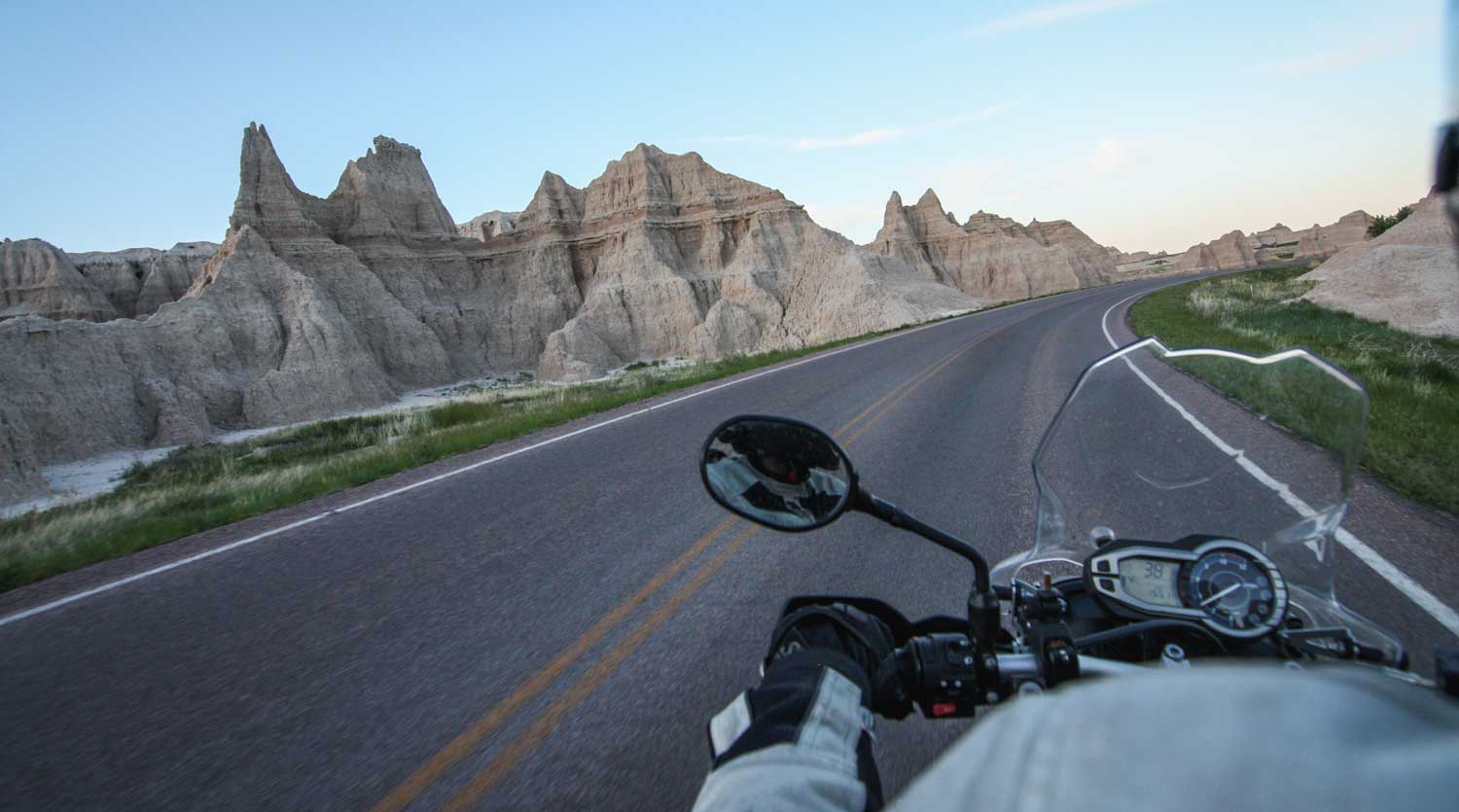
Never Road Weary:
A Continental Motorcycle Trip In 8 Parts
Words and Photography by Hailey Hirst
In spite of wars and tourism and pictures by satellite, the world is just the same size it ever was. It is awesome to think how much of it I will never see… you can pay a lot of money and fly round it nonstop in less than forty-eight hours, but to know it, to smell it and feel it between your toes you have to crawl. There is no other way. Not flying, not floating. You have to stay on the ground and swallow the bugs as you go.
— Ted Simon, Jupiters Travels: Four Years Around the World on a Triumph
I’ve spent much of the last two years of my life on the back of a motorcycle with a camera in my lap. I didn’t quit my job for this journey. I didn’t even plan on going this far. But here we are, 20,000 miles later.
Traveling in short bursts and leaving the motorcycle in storage units between trips, we traveled 27 states, 6 Canadian provinces, and 44 National Parks, cumulating almost 5 months of total travel in 8 individual trips. We’ve been to the corners of the continent and home again.
After all the months and miles, I’m convinced there’s no better way to experience the landscape than by leaning into the curves of tiny highways, tent camping, changing out of riding clothes in parking lots, and hiking whenever possible.

Organ Pipe Cactus National Monument, Arizona
I’d never even been on a real motorcycle until two years ago. That’s when my boyfriend, Jesse, got his Triumph Tiger. Two months after our first afternoon ride we left Jesse’s hometown in British Columbia headed down the west coast, and the motorcycle wasn’t back in BC again until 20 months later.
Our plans were loose when we left Kelowna: 11 days to travel down the west coast. We left the Okanagan Valley on the edge of autumn, passing chilled apple orchards and pockets of fog in Northern Oregon. We stopped at Crater Lake and then the California border swept us south back into the lingering summer of September. We felt like ants in the Redwoods, we climbed Half Dome in Yosemite and could barely sit on the bike the next day after 19 miles of hiking. We made our way to Monterey for sweet curves and succulent coastlines down the Pacific Coast Highway. When we got to San Diego, we left the bike in a storage unit and flew back to work.
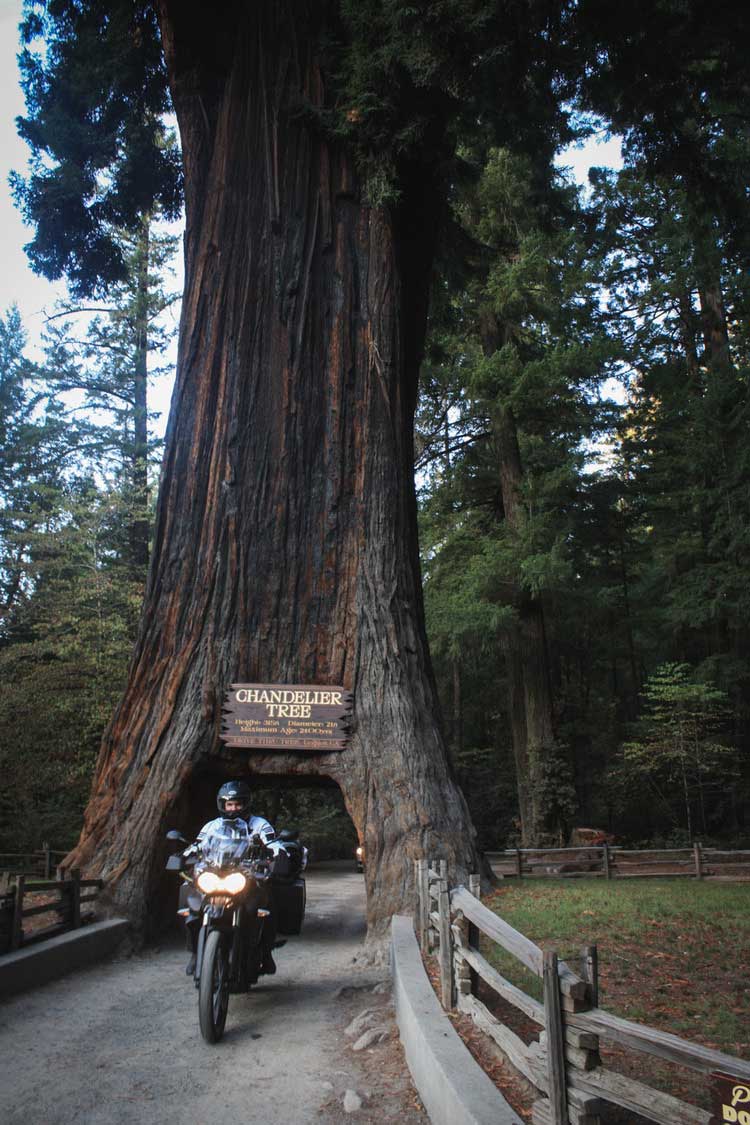
Drive-thru Tree Park, Legget, California
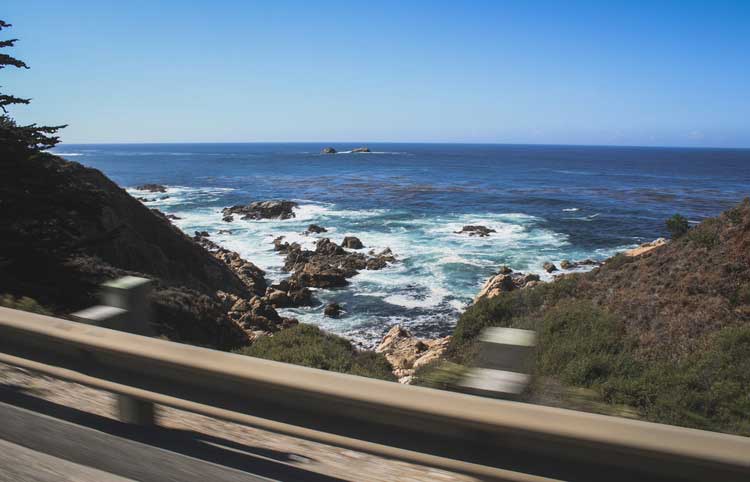
Pacific Coast Highway, California
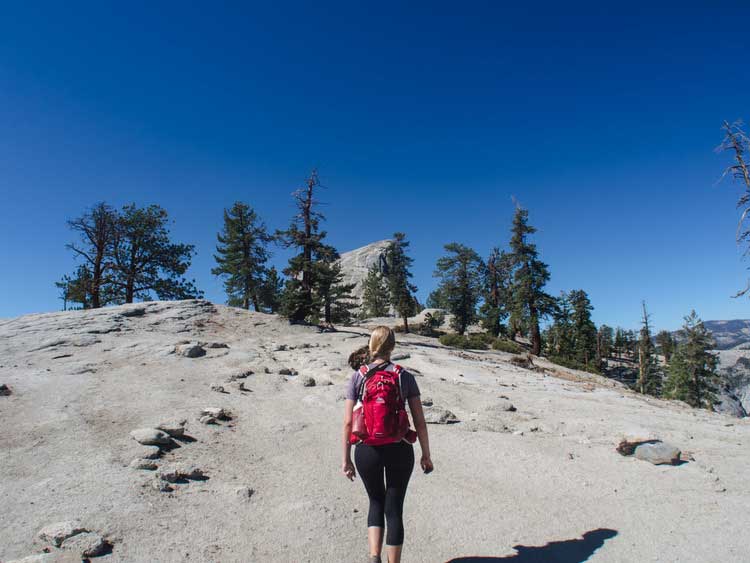
Yosemite National Park, California – Photo by Jesse Newmarch
When we returned for the bike two months later, we’d decided to keep going for a two-week loop of Arizona. Joshua Tree, Route 66, the Grand Canyon, Flagstaff and Sedona. We left the bike behind my Grandparents’ RV in Brenda, Arizona at Thanksgiving. Three months later, we returned again and instead of heading north, we continued east as far as Texas.
That was the pattern of how our two-year long journey began: a week from here to there, a storage unit. Then another few months of working before we returned again. Days on the road usually consisted of riding a few hundred miles while stopping often to stretch, taking back roads instead of the freeway, making pit stops at cafes for cups of coffee and BLTs.

Our journey September 2014 – May 2016 | Route in blue, Black dots where the motorcycle was stored between trips.
Although we traveled far, we took very little with us. We had only a few days of clean underwear stowed inside a backpack that was bungee corded to the motorcycle every day along with a two-man tent, two sleeping bags and pads. In our luggage boxes were carried a camp stove, one dented pot and two tin mugs, three spoons and one butter knife, one clean change of clothes, two toothbrushes and toiletry bags, a laptop, flashlights, batteries, chain grease, fuel stabilizer, ratchet straps for ferry crossings, a journal, phone chargers, passports, earplugs, and coins for tollbooths.
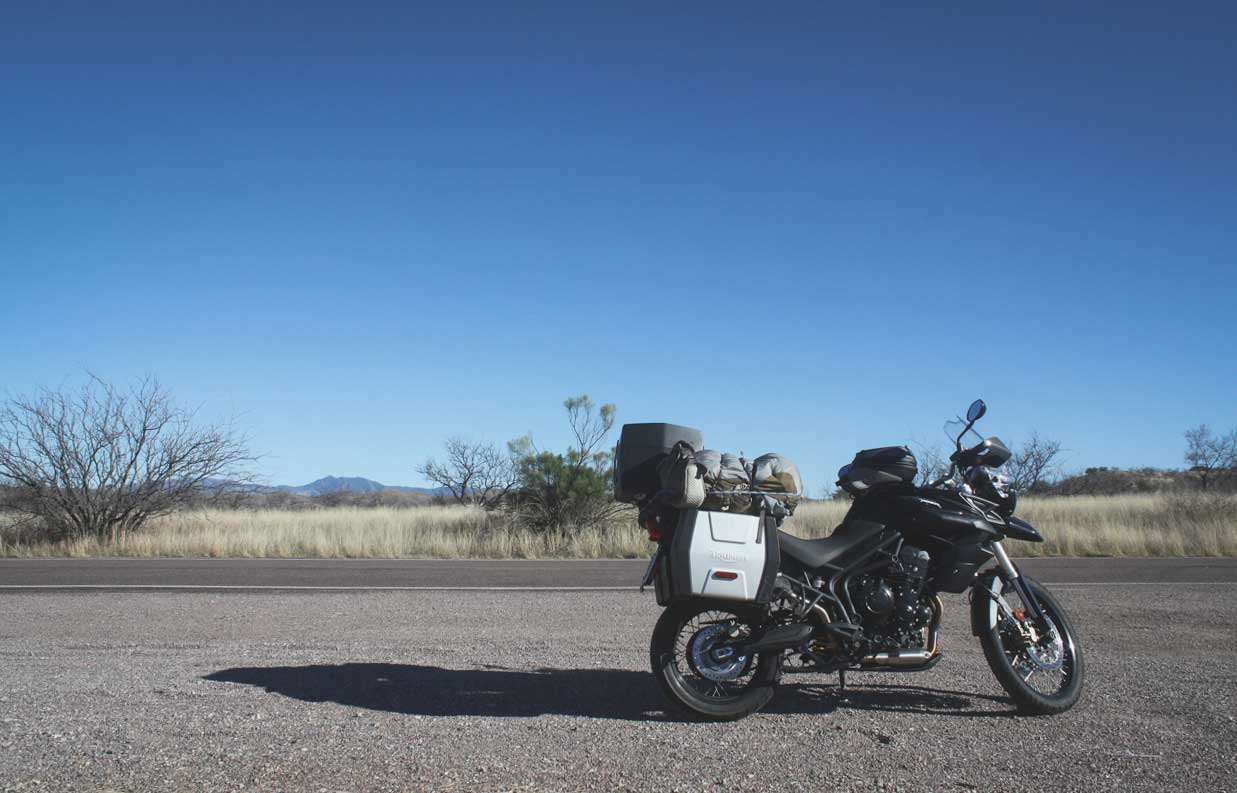
Highway 80, Arizona
Condensed, our journey was a long string of campgrounds, motels, gas stations, national parks, storage units, flights home, short bursts of travel punctuated by periods of work.
Slowly it all accumulated into a more ambitious journey than we’d intended. But broken down into sections, we were never road weary. Each leg was fresh. Our lives at home were intact. Jesse works as a mining engineer at a remote mine site in northern Canada, and I work a part time office job and moonlight as a writer in Idaho. We’ve built our lives to be flexible together, but we didn’t have to give up anything to embark on a long journey.
Slowly it all accumulated into a more ambitious journey than we’d intended. But broken down into sections, we were never road weary. Each leg was fresh. Our lives at home were intact.
I’ve learned that, while you can quit your job and live in a van, you don’t have to. A motorcycle will do. A tent is fine for now. A job can still be waiting at home when the bike and is stowed inside a storage unit ten miles from the Atlanta airport.

Badlands National Park, South Dakota
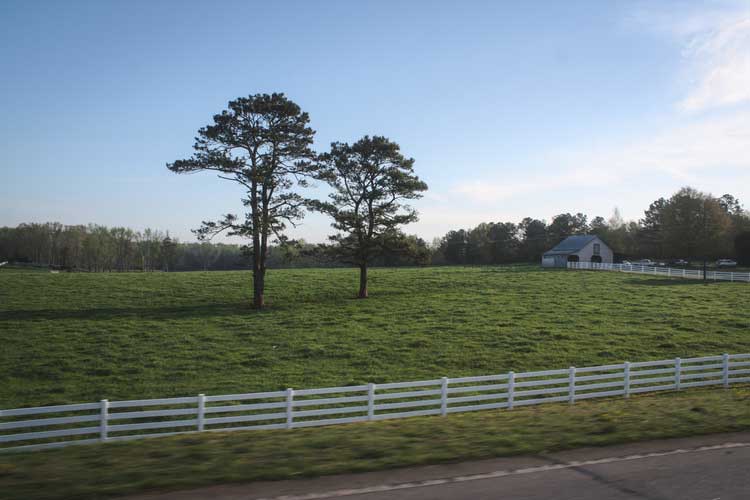
Carrollton, Georgia
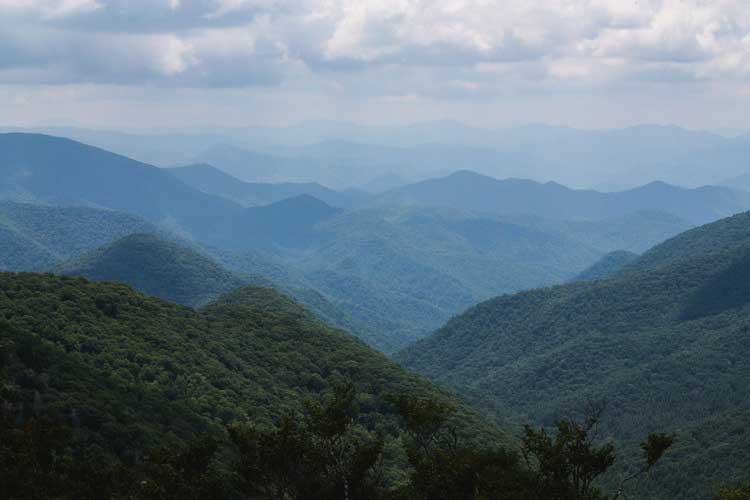
View from the Blue Ridge Parkway, North Carolina
While we may not have had the same immersive travel experience that happens by dropping everything and living in a van, we had something unique. We had one motorcycle, a tent, a national park pass, and two years of slow travel.
That’s the thing about motorcycle travel, the slow-ness of it. You have the capability to go as fast as a semi truck on the freeway, but for all senses of safety and enjoyment, you shouldn’t. The thing bikers have known all along, is that journey is what matters. We could speed between big cities, we could skip the “fly-over” states, but we don’t want to. There is value in going slow and seeing it all.
It’s like Ted Simon said. To really see the world, you have to stay on the ground and swallow the bugs as you go. Each day puts you at the mercy of the weather, but also puts you square inside the world instead of inside a bubble passing through where distance is reduced to hours and a hum of road noise. A motorcycle makes you feel the miles accumulating in your body, and lets you learn to read when a storm is coming, how it smells, how it has its own weight and sudden coolness.
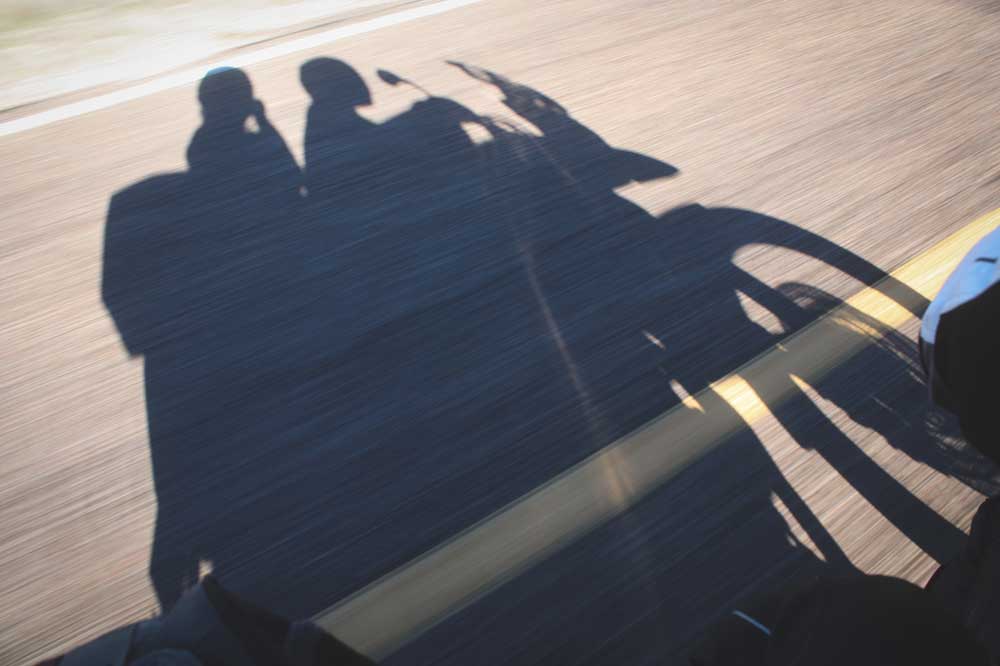
There is value in going slow and seeing it all.
The blue-sky days were picturesque and the national parks were incredible, we got to feel the seasons change as we moved across the landscape, but the daily routine of motorcycle trip was not glamorous. We spent our first hour packing up camp, or at least repacking the luggage boxes if we’d stayed at a motel. We put on the same (increasingly dirty) motorcycle clothes every day. We laced up our boots, strapped on our helmets, and slid our hands into leather gloves that grew softer with each storm and scuff. We mounted the motorcycle, and rode on.
Mostly, it was hours of wind, Jesse singing the wrong lyrics to classic rock songs into our Bluetooth helmet headsets, stopping to stretch our butts, ordering coffee to warm up, or buying gas station popsicles to cool off. If we’d ridden too long we’d lie next to the bike on the pavement or a patch of grass when our backs ached from sitting all day. There was a lot of sweating in the Southwest, and shivering in Michigan.
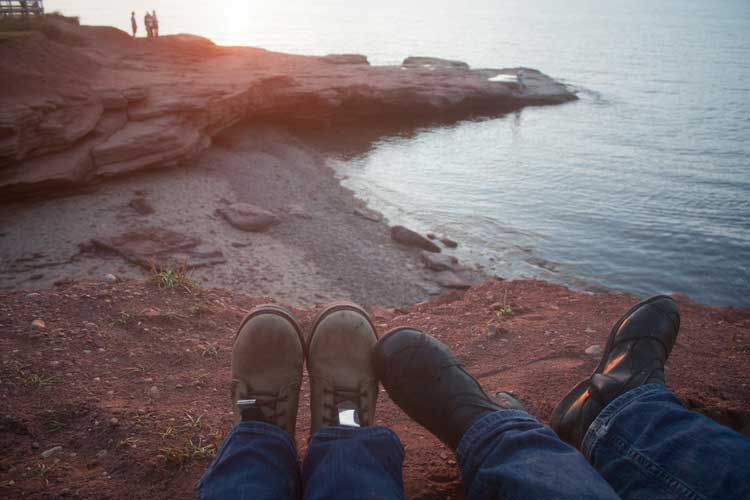
Prince Edward Island National Park, Canada
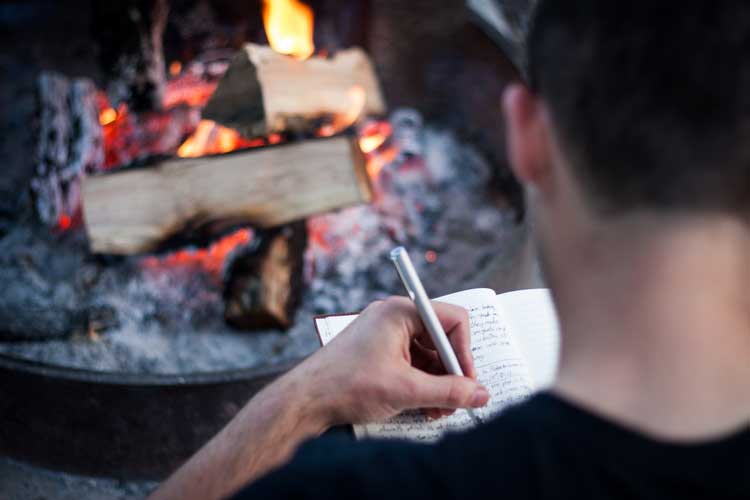
Palisades State Park, South Dakota

Woodruff, Wisconsin
And then suddenly, once we’d nailed the routine of packing up the bike and perfected the timing of putting on rain gear before a thunderhead broke over us, after so many weeks and so many miles, we crossed over the Rocky Mountains from Alberta back into BC and into the land of mountain lupine and ponderosa pine. Sweet smells of grass and aspen trees and western air wrapped around us, and we were home.
We parked in the driveway, unpacked the bike, walked inside to the dinner table set, and the unexpectedly long journey was abruptly but quietly over. After two long years, the loop was complete.
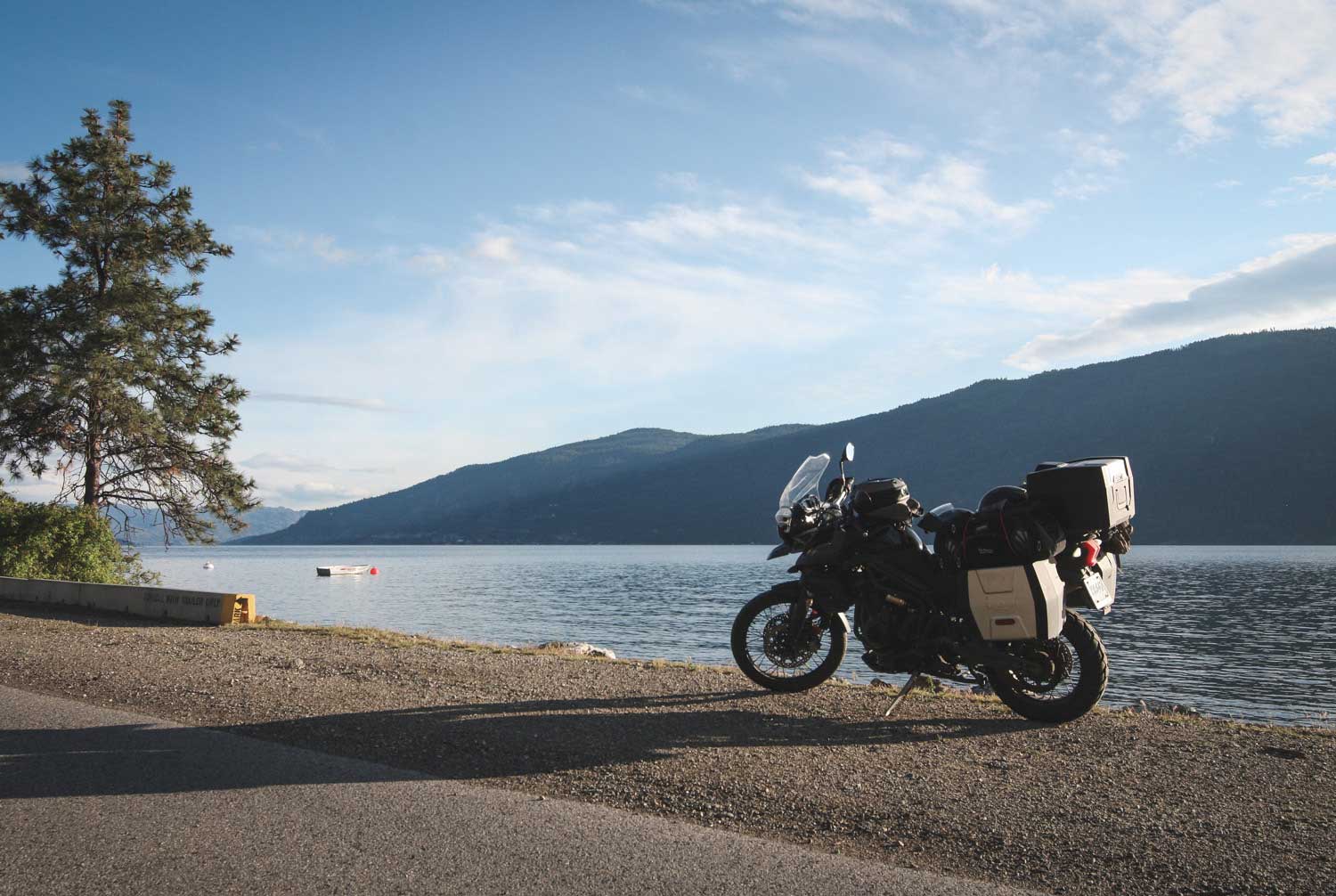
Kelowna, British Columbia
Looking back at all the ground we covered, it still feels like there is so much left to see. I’m taking a motorcycle course this fall and getting my own bike, and maybe we’ll leave again to live for longer on the road.
I just keep thinking though, how wild it was to just go, and to keep going, to leave the journey and come back to it, to let the tangled highways of our countries slowly unfurl behind us.
Hailey Hirst is a traveling writer and editorial intern for She Explores. Find her on Instagram or check out her Blog to see more.
Be the first to comment